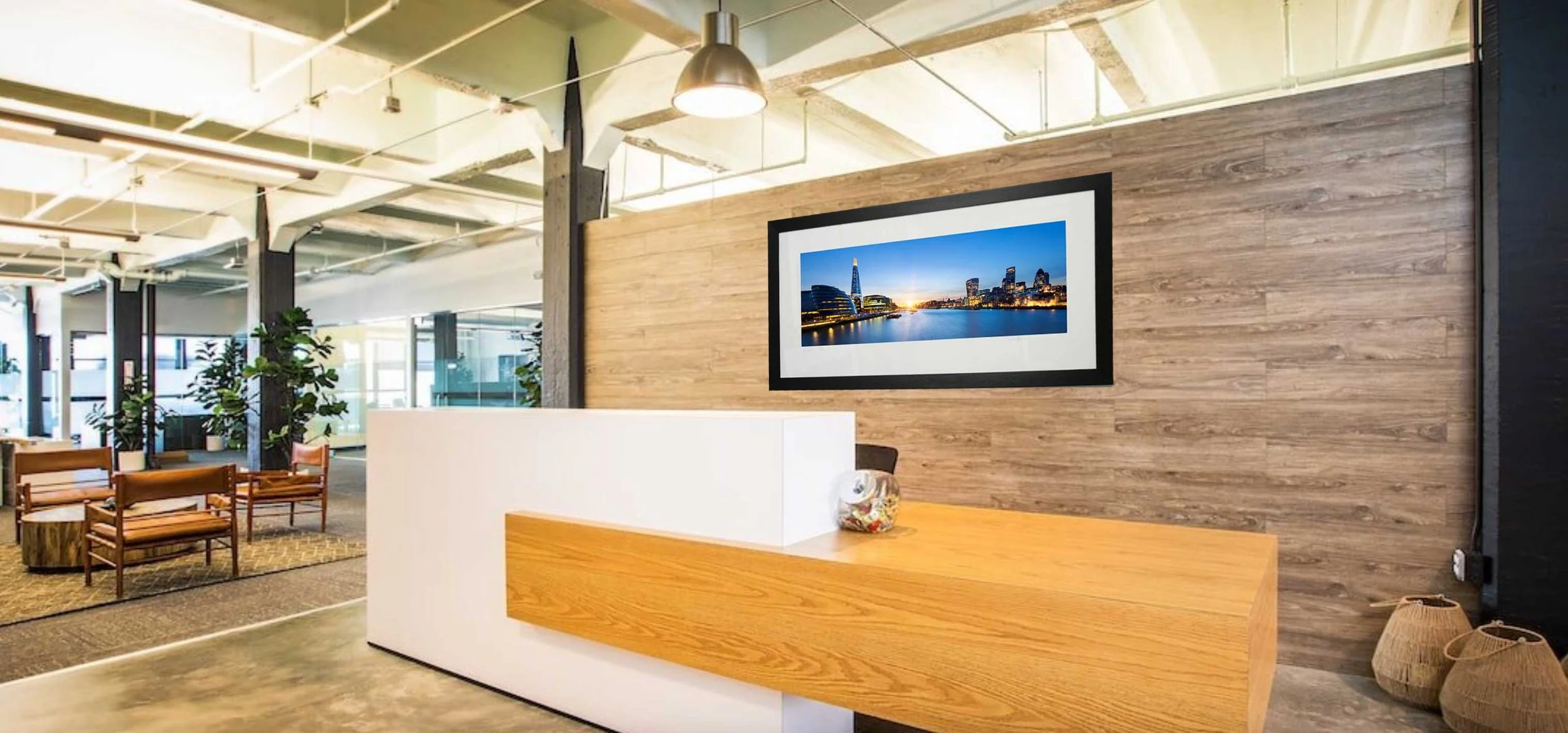The perfect panoramic print and how I produce one.
Panoramic prints are something I love. I love taking the photograph and I take more time over the shape the print will be. If it’s a commission for a client I’ll also be thinking about where in the office or home that print might end up hanging.
Panoramic prints are something that I’m known for and I have clients who come back to me who love the panoramic shape.
Firstly I’ll have the location in my mind and the time of day that works best . Generally I’m familiar with the location particularly if it’s in London. The light at the beginning or the end of the day is normally best as there’s plenty of ambient light at sunrise and at sunset. If the sun is low in the sky too itmeans I can do interesting things with the silhouette that the sun produces.
If I’m shooting on film and I’m using black and white I’ll use a fairly fast ISO- around 400. Sometimes I’ll use 1000 ISO. The graininess a faster film produces adds to the contrast. If I’m going to make a colour print I’ll go for Fuji Velvia slide film which has a very low ISO, at 64, and produces beautiful saturated colours. Sometimes I’ll want graininess in a colour print like this image of St. Pauls.
If I’m using a DSLR the process is the same. I think in terms of the way film behaves.
I’ll use a tripod. I use a tripod always.
If I’m using my medium format camera I’ll take a few polaroids to check exposure and to get a feel for the part of the image I’ll take the panoramic print from. Normally its the middle part of the portrait medium format shape.
The weather is the big variable in taking a picture. If it means waiting for a number of hours for the perfect light the weather can change. Four seasons in one day and all that.
I’ll take a few dozen shots and back I’ll go to my darkroom where all will be revealed. I’ll have a good idea if the outing has been successful as the test polaroids will give me an indication.
So I’ll develop my film.
Once I can see what I have to work with I’ll start making some test prints. The great thing about slide film is that it’s positive rather than negative. You can easily see by looking at a slide what a print might look like.
It’s a methodical process making test prints. Once I’ve narrowed down which negatives or slides I want to print I’ll start making test prints. The contrast between the highlight areas and the dark areas will require a little ‘dodging and burning’ and the paper I choose can also make a difference.
Watching a print come alive in the developer fluid is the most fantastic thing. Ever since I first learned how to make a print when I was 15 I look forward to this bit at the end.
So I hear you say. What about digital cameras and adobe photoshop? Yes I do use digital and I do use photoshop but most of what you see on this website was taken using film and the prints are made by hand. It’s what most of my clients want, they appreciate the process. My prints are a bit more expensive than a lot of work you’ll see online because so much work goes into making a print.
And even more work goes in to making a panoramic print.


